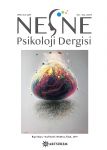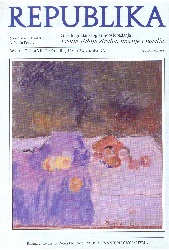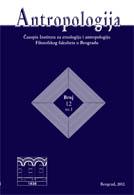
We kindly inform you that, as long as the subject affiliation of our 300.000+ articles is in progress, you might get unsufficient or no results on your third level or second level search. In this case, please broaden your search criteria.


The paper examines how language builds an ethnic and artistic identity before, during and after the concentration camp experience, in the book having an autobiographical content, The Story of a Life by Aharon Appelfeld. His childhood languages-German (native language), Yiddish (his grandparents language), Ukrainian sprinkled with Romanian words (official languages of social environment, especially the city of Czernowits) are the stable roots looking for a new assumed identity in Israel through the Hebrew language learned in a cultural context.
More...
My article intends to look at two instances of dissolution of identity, an outer-directed one, illustrated by E. A. Poe’s ‘The Man of the Crowd’ and an inner-directed one, as embodied by Hermann Melville’s hero in ‘Bartleby, the Scrivener’. I hold that, in both cases, what is rejected is functionalist and pragmatic view of identity in favour of an existential, ontological assertion of it.
More...
Małgorzata Szumowska is without a doubt one of a few Polish directors who has managed to distinguish herself on the European film market. Although, Szumowska is a cosmopolitan (in Ulf Hannerz’s terms), she does not forget about her Polish origins. On the contrary, she emphasizes contemporary Polish identity of her protagonists and Polishness in itself but does it from the external perspective. In her feature films, Małgorzata Szumowska defines Polish identity, according to Antonina Kłoskowska’s theory, as a phenomenon which always exists in a specific social and cultural context. From this perspective, Polishness is constantly negotiated and renegotiated by film protagonists. The author will distinguish three categories through which the director defines Polishness, these are: cultural trauma, national character and modern Catholic religiousness. These categories will be analyzed on the basis of specific examples. An applied methodological approach relies on cultural poetics assumptions, also known as new historicism.
More...
This paper is focused on the development of the model of political culture of the citizens of Macedonia, during the so called transitional period, with a special focus to the issue of ethnic identities and identities in general, as they were determined by the changes of the general value matrix. Data from the latest research done on political culture and identities (June – September, 2010) will be presented and compared to some previous researches. The focus is on the questions: is Macedonian society really multicultural, and if it is, is that a burden or a contribution to its members? The paper analyses the ethnic environment, the ethnic distance and the perception of self-identities of the citizens.
More...
The present paper focuses on identifying and analysing Romania’s image country, Romanians’ identity and the stereotypes regarding them, in Japanese language cyberspace during 2015-2018. The research study has been conducted on a number of 108 articles written exclusively in Japanese language, selected according to the following criteria: the author’s identity as a native Japanese language speaker, number of visualisations, Google’s rankings, and time of publishing. The innovation of this article lies in the fact that we concentrated strictly on the Japanese language cyberspace and we concluded in pointing out subtle, sensitive and yet radical differences between the reflection of Romania and Romanians in Japanese language cyberspace and international language cyberspace.
More...
The article addresses the issue of the cultural characteristics of contemporary sport. The crucial questions posed in this context concern the perspective of the further existence of sport as a formation entangled in fundamental contradictions resulting from the mutual incompatibility of its praxeological and ideological-moral functions. Striving to neutralize or mitigate these contradictions, sport reveals its strong addiction to the logic of the market on the one hand, and on the other hand to the logic generated by the needs and dilemmas of contemporary culture.
More...
Reducing the prejudices among the groups is one of the primary issues that social psychologists have been dealing with for many years. The main purpose of this review article is contribute to the Turkish literature by examining the effectiveness of the recategorization process in improving the negative attitudes towards the outgroups. To this end, the present review article consists of four parts. The first part includes the hypotheses of focusing on personal identities in reducing negative attitudes towards outgroups and the research findings about this approach. In the second part, studies related with the common ingroup identity representation which emphasizes the necessity of transforming the mental representation of the group members from the two groups (us and them) to a group (we) were examined. Next part contains theoretical information and research findings related with dual identity representation, which developed as an alternative to common group identity. In the fourth and the last part, studies related with the relationship between effectiveness of identity representation and group status were presented.
More...


The article is devoted to the way of perceiving Silesia and the Silesian identity from a non-national perspective. The policy of the countries to which Silesia belonged shaped the research manners of its inhabitants’ identity. The researchers’ approach was often ideology-ridden and nowadays this manner can be qualified as post-colonial. The article provides an attempt at answering who should conduct research on Silesia, on whose behalf, and what attitude a researcher should represent.
More...
National or ethnic minorities are communities exemplifying the processes of collective identity formation or maintenance. Among such communities are the Kashubs, the subject of the authors’ analysis. From one point of view, they might be a regional cultural-ethnic community, from another – an autochthonous regional group or ethnic minority. The status of the Kashubian language has been officially regulated – it is regarded as a regional language, according to the Act of 2005. However, there is no regulation of the group status (recognition as a minority), which is one of the reasons for identity disputes within the group. On one hand, the Kashubian language is in a privileged position, not only thanks to the legal protection, but also large-scale education at schools. On the other hand, the Kashubian language is heading towards extinction in terms of family succession, which poses questions concerning its future. The protection of the language and the development of the Kashubian culture, as well as the strengthening of the Kashubian identity is the chief objective of the Kashubian movement.
More...
The paper presents some feminist theories about female identity and gender. On the one hand, there are theories by CH. Witt and M. Mikkola who consider the concept of femininity dependent on the social opinion (a social construct of gender). On the other hand, Christian feminist philosophers emphasize that the biological and psychological qualities of woman are closely associated with her maternity, and they are fundamental to her identity. The goal of the paper is to evaluate strengths and weaknesses of these two diff erent approaches.
More...
The purpose of this paper on the novel Katzenberge (Cat’s Mountains) by Sabrina Janesch is to locate it in the context of a debate on the German memory culture(s) and its representation in Germanlanguage literary texts. This classification is justified by a specific regional and generational character of the war memories in the novel. Within this short observation, the author of the paper is interested not only in historical, sociological and cultural study questions, which are connected directly to this topic, but primarily and especially, in what way and using what means the pictures of Silesia and of Kresy were created as memorial sites in the novel Katzenberge (Cat’s Mountains), which is based on autobiographical motifs. The research problem, which appears in this study, can be formulated as follows: In the PolishGerman history of forced resettlements from the period of World War II, there are gaps whose existence in a more or less significant way distorts the perception of this issue, both at the level of historical reconstruction, in which certain aspects of common history are omitted, as well as at the level of reflection on them in literary texts. The article proposes a thesis that the novel Katzenberge (Cat’s Mountains) by Sabrina Janesch fills an important gap in German-language literature, which is the history of Polish refugees and people forcibly displaced from the Kresy to Silesia. Thus, the literary topography of this region expands, becoming a place where the fates of Polish Kresowians and German Silesians intersect and overlap, while the region itself assumes the form of a palimpsest. The following research methods were used: narratology and hermeneutics. These research methods allow in-depth analysis of the structure and content of the text, as well as facilitate an attempt to interpret it in the context of the issues under investigation.
More...
Satya Sai Baba is a global guru from south India whom followers consider to be the avatar or incarnation of the supreme god consciousness of our time. Because of the belief that Satya Sai Baba is god in human form, his followers ascribe a number of specific godlike atributes to him, such as being all-knowing, omnipotent and omnipresent. Satya Sai Baba founded the Satya Sai organization in Putaparti in south India in 1960. The organization later spread and started to grow in Serbia in the late 1980's. Satya Sai Baba's mythologized life had a significant role in the efficient spread of the movement and the creating of the world of Sai devotees. An analysis of the essential elements of the mythical biography will indicate the existence of coinciding elements in the life of Sai Baba and other religious figures. These elements have an essential role in spreading the faith of Sai Baba as an incarnation of god. By applying structural analysis, we will determine the necessity of mythologizing the guru's life in the creation and survival of sai-babism, globally as well as in Serbia. Key events and characteristics of the mythologized life of Satya Sai Baba have been determined based on fieldwork and interviewing Sai followers in Serbia in 2011 and 2012.
More...
The paper will focus on the ever-changing role which human bodies have played through the history of widespread Internet use. Viewing contemporary human bodies as, in fact, cyborg bodies, I will argue that it was these technobodies that influenced the creation, but were also the direct consequence of a significant shift in the perception of reality experienced by Internet users in general, and users of social networking websites in particular. Furthermore, I will try to demonstrate how the corrosion and questioning of the borders between the real and the virtual, which emerged as a consequence of the mass influx of technology into all levels of society, brought about the creation of hyperreality – a reality which simultaneously incorporates and moves beyond physical as well as virtual reality, and creates new frameworks of existence, presence and sociability.
More...
In this paper we consider the influence that the entertainment-donor manifestation called World Witches Congress held in Veliko Gradiste in fall 2009, if continued, would have on national identity of Serbia. We look into the relation between World Witches Congress and folklore of eastern Serbia when it comes to witches, regarding a concept where national identity is equal to cultural identity of a country.
More...
I discuss analytic purpose of the term ambiguity, as used by E. R. Leach, for the issues concerning identification with cultural heroes. Cultural heroes represent cultural cognitive models, which are unquestionable concerning norms and values they stand for in the real life, no matter some contradictions could be noted within them by the external observer. People striving to improve their status – as Leach has put it – by identifying with the figures of cultural heroes do not take into consideration such contradictions, taking the model and its representative, cultural hero, as granted form for the object of their identification. If we study what those people think and how they behave accordingly, and not that what we the anthropologist think they think and do, I argue that the term ambiguity is analytically obsolete.
More...
Review of the Daron Acemoglu and James A. Robinson book: "Why nations fail?" by Dimitrije Birač
More...